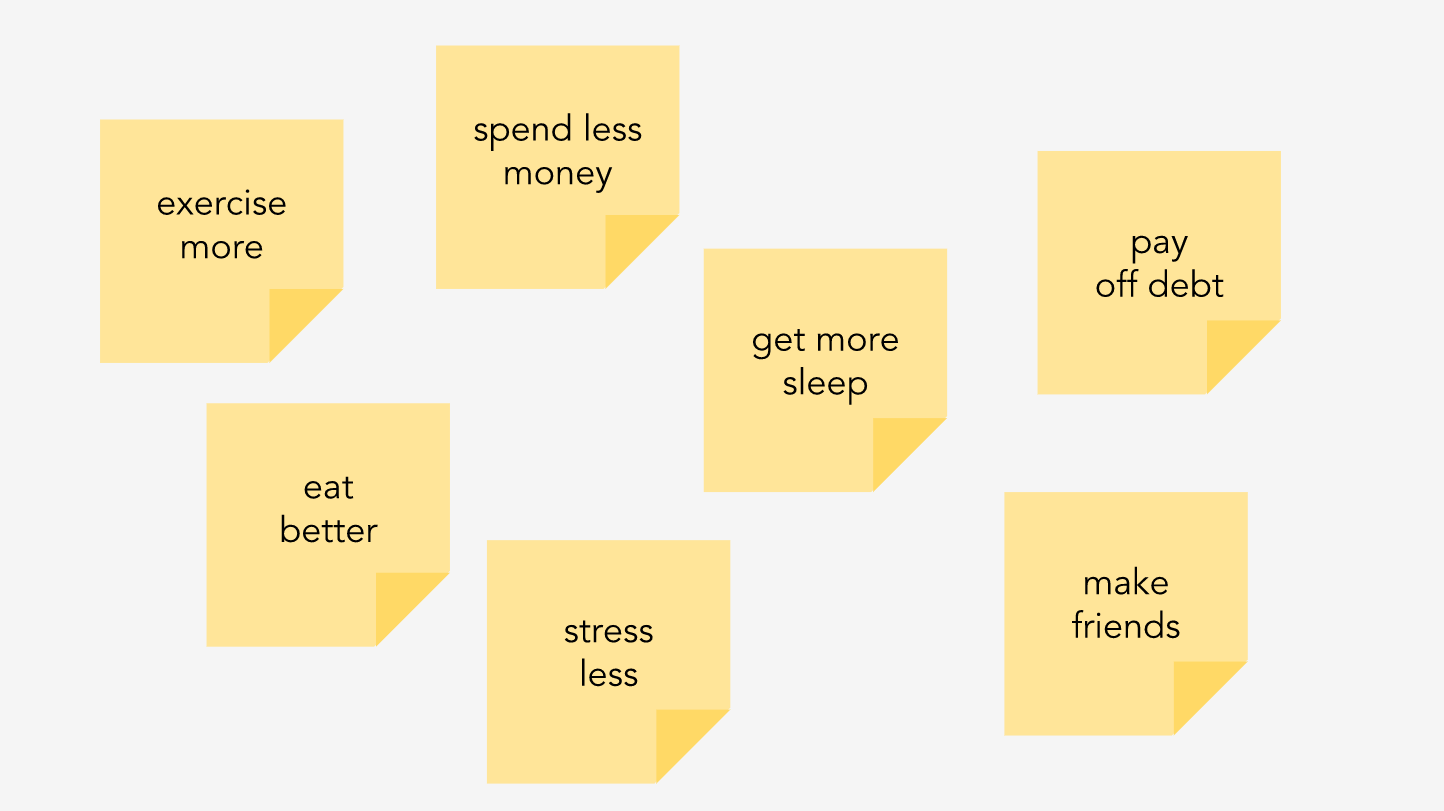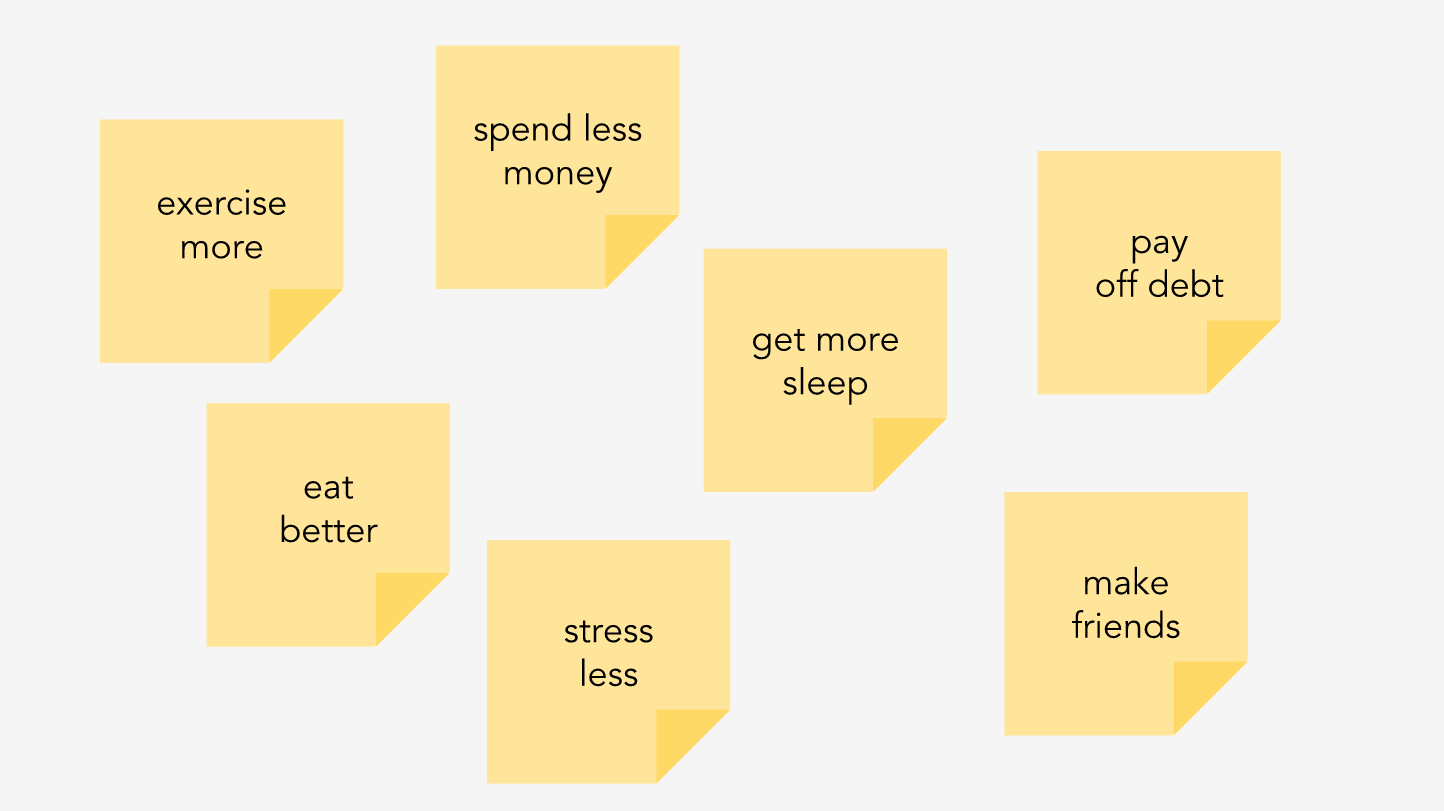Toss out your New Year’s resolutions and set OKRs instead

How many of you made New Years resolutions? How many of you have already given them up? I wouldn’t be too surprised if many of the resolution setters have already given them up, and we’re not even a full month into 2018. This is one of the reasons why I think there is a better solution to planning goals, and that solution is OKRs.
We have a trend at Fractured Atlas of bringing tools and frameworks we use in our jobs into our personal lives. People have used Theories of Change to figure out if they’re ready to be a parent, Trello boards for screenwriting projects, and Pivotal Tracker as a way to plot out dream velocity. I always thought it was great to have people so passionate about these tools, but didn’t fully understand the pull to do it myself until Fractured Atlas started using Objectives and Key Results (OKRs). As soon as I was introduced, I was hooked.
So what is an OKR?
OKRs stands for Objectives and Key Results. It’s the concept of setting a few higher level objectives over a set period of time (usually a quarter) and then setting measurable Key Results that aid in achieving each of the objectives. Wikipedia tells me that they were invented at Intel, but I first learned about them from Google. They are a way to set goals across an organization so that everyone can see the connection to organizational goals and purpose.
At Fractured Atlas, we’ve been using OKRs for almost 2 years, and I’ve been using them personally for just over a year. Although I approach them a little differently then the organization does (I’m only one person instead of a complex organization), I find similar benefits in creating my personal OKRs as my Fractured Atlas OKRs. They help plan out goals that are a set period of time, measurable, and doable with a little stretch built in. They have helped me see how my work relates to the mission and purpose of Fractured Atlas, and how goals in my personal life lead to my own wellbeing and productiveness.
I want to note here that organizations use them in different ways, but at Fractured Atlas we set individual goals that cascade up to our manager’s goals, that then cascade up to Organizational Objectives that are set by the Leadership team.
Why they’re better than New Year’s Resolutions
I used to be the person who set large overarching New Year’s resolutions that would soon be forgotten. Exercise more would soon get muddy with questions like, “What is more?” “Why do I want to exercise more?” “How do I stay accountable to myself?” “How can I make time to keep this as a priority?” “A whole year of exercising more?”and I would quickly abandon the resolution. This led to a disappointment, while at the same time other really great things that I was doing would go completely unnoticed.
I feel similarly to past ways that Fractured Atlas would measure success. Perhaps it’s because I was still fairly new, or because I never asked, but I felt little connection to our Thematic Goal number 3 (Patrick Lencioni has some great ideas, but I’m not a Thematic Goal fan). I knew that it was a big deal for the organization (so big that we had t-shirts made), but I had no idea how my own work related to this goal. It was an overarching goal for the organization, and yet I couldn’t see how my own work helped bring it to fruition. That’s not great. I hoped that my work was contributing to the organization, so it was disappointing to feel disconnected from something so seemingly important to the organization.
Compare that to one of the early conversations we had about OKRs during the pilot phase at Fractured Atlas. I was talking with one of my coworkers, and mentioned how I didn’t understand how doing something like filing the 990 fit into the organizational goals. Annual reporting like the 990 is’t obviously tied to the mission of the organization, but nonetheless allow for the organization to run. My colleague asked what would happen if the 990 filing didn’t get completed. The answer is that our nonprofit status would be in jeopardy, which would affect the entire organization. That is immensely important, but somehow not something that I had thought about in those terms before. It was helpful to understand how the work that I was doing helped the Organization.
What makes OKRs different?
Measurable: Each Key Result is measurable. Whether the result is “All 1099s are successfully filed” or “All staff are using GSuite for email” there’s a way to concretely know if this has been done.
Compare the amorphous resolution of “get more exercise” to the Key Result “Average 7,000 steps walked each day.”
Shorter time chunks: A whole year is really long for most organizations or people to plan out. Quarters are more manageable. They also allow for quicker adjustment of priorities if something comes up, and more room to iterate from one quarter to the next. Since Fractured Atlas started using OKRs, we’ve tweaked something nearly every quarter to make OKRs work better for us.
New Years resolutions are so daunting because they’re for an entire year. Think a little smaller and see what you can do for the next three months instead. If it doesn’t work, you have three more quarters this year to get to something that works.
Built in Ambition and Slack: Note: If you need to be convinced that slack is important, read this first. One of my favorite parts of OKRs is that you’re not aiming to complete 100%, but rather aiming to hit around 70%. If you get 100% complete, you’re not setting ambitious enough goals. As a high-achiever and perfectionist, I really value this little built-in failure. It acknowledges that a lot can happen in a quarter to sway priorities and allows for a little wishful thinking and extra push, even when things get busy.
Compare this to most New Year’s Resolutions that are completely succeed or fail. Resolutions don’t tend to come with a built-in buffer.
They capture the work already being done: This is another really big point that we at Fractured Atlas, and I on my own, have had to come back to. OKRs aren’t projects on top of the work that is being done, they capture the work already being done and needing to be done. They won’t capture every little thing, and might put equal weight on two goals that are vastly different in terms of time and effort (one example that we like to come back to is the quarter where “finish two blog posts” got the same weighting as “complete the office renovation”), but they will capture the things that are already being done and are important to the organization.
How often do people set resolutions to stay up to date on all their health appointments or attend a certain number of art events? How about finishing a certain number of creative projects? Most of these seem too small to be considered New Year’s Resolutions, but have all found their way into my personal Key Results.
They’re transparent: This is one of the reasons OKRs are so powerful in the hands of organizations. Everyone in the organization can see what every other person in the organization is focusing on each quarter. This helps people get a sense about what’s going on inside the organization and allows for people to have more information about what’s going on around them. I recently read Susan Scott’s book, Fierce Conversations and loved one of the metaphors. Susan Scott described organizations as beach balls. Each color of the beach ball is a different department. Let’s say blue is Finance, orange is Marketing, and green is Programs. If you’re sitting in your department on the beach ball you’ll only see the color that surrounds you and that will seem like the reality of the organization. The Director of Finance will see a blue organization and the VP of Development will see a green organization. Both people would be absolutely correct, but incomplete in their view of the multi-colored organization. The transparency of OKRs helps show off the different colors of the beach ball organization. If I know what priorities my coworkers have at any given time, it can help me figure out how I might work together with them on projects and catch things coming down the pipeline.
This is one aspect that lends itself a little better to organizational OKRs than personal ones. I have yet to share my personal OKRs with others, other than those closest to me, but if you can find an accountability buddy, I’m sure that you’d get something out of that too!
How You Can Get Started
Interested in throwing out your New Years Resolutions and instead trying OKRs? Great! These are a few resources to get you started.
Google Re:Work There’s a wealth of information over on Google’s Re:Work blog. They give a nice intro and suggestions on how to approach bringing OKRs to your organization.
Fractured Atlas Core Curriculum video While we’re in the process of getting our entire Core Curriculum (training courses any new employee needs to go through when starting at Fractured Atlas) available for the public, here’s a little teaser video that new employees watch before setting their Fractured Atlas OKRs.
OKR Software comparison We tried a couple of OKR software options, and ended up deciding we prefer the simplicity of a shared Google spreadsheet. You, however, might enjoy taking a look at how other organizations track their OKRs. Note: for my personal OKRs, I just use old fashioned pen and paper.
Chat with us on the Fractured Atlas People Team I love talking about tools and frameworks, and the Fractured Atlas People team is made up of some great people with varied experience and expertise. If you want to have a more in depth chat, ping us and we’ll try and set up an HR Hour chat!
About Nico Carpenter
Nico Carpenter (they/he) works on the People team at Fractured Atlas, where they find ways for tools and processes to better align with the organization’s purpose. Prior to joining Fractured Atlas, Nico worked for a variety of arts organizations including MoMA PS1, Walker Art Center, and Heidelberger Kunstverein, and he still has a particular love (and skepticism) for museums. They also serve on the board of Fireweed Community Woodshop. Originally from Minneapolis, they received a BFA in Art from the University of Minnesota and continues to stay creative through knitting and sewing clothes. He is currently in too many book clubs, but still finds time to read books about organizational culture for fun.


